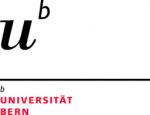Genotyping of Francisella tularensis strains by pulsed-field gel electrophoresis, amplified fragment length polymorphism fingerprinting, and 16S rRNA gene sequencing
Investigación publicada en Journal of Clinical Microbiology
1 de agosto de 2002
We evaluated three molecular methods for identification of Francisella strains: pulsed-field gel electrophoresis (PFGE), amplified fragment length polymorphism (AFLP) analysis, and 16S rRNA gene sequencing. The analysis was performed with 54 Francisella tularensis subsp. holarctica, 5 F. tularensis subsp. tularensis, 2 F. tularensis subsp. novicida, and 1 F. philomiragia strains. On the basis of the combination of results obtained by PFGE with the restriction enzymes XhoI and BamHI, PFGE revealed seven pulsotypes, which allowed us to discriminate the strains to the subspecies level and which even allowed us to discriminate among some isolates of F. tularensis subsp. holarctica. The AFLP analysis technique produced some degree of discrimination among F. tularensis subsp. holarctica strains (one primary cluster with three major subclusters and minor variations within subclusters) when EcoRI-C and MseI-A, EcoRI-T and MseI-T, EcoRI-A and MseI-C, and EcoRI-0 and MseI-CA were used as primers. The degree of similarity among the strains was about 94%. The percent similarities of the AFLP profiles of this subspecies compared to those of F. tularensis subsp. tularensis, F. tularensis subsp. novicida, and F. philomiragia were less than 90%, about 72%, and less than 24%, respectively, thus permitting easy differentiation of this subspecies. 16S rRNA gene sequencing revealed 100% similarity for all F. tularensis subsp. holarctica isolates compared in this study. These results suggest that although limited genetic heterogeneity among F. tularensis subsp. holarctica isolates was observed, PFGE and AFLP analysis appear to be promising tools for the diagnosis of infections caused by different subspecies of F. tularensis and suitable techniques for the differentiation of individual strains
Garcia del Blanco N., Dobson M., Vela AI., de la Puente VA., Gutierrez CB., Hadfield TL., Kuhnert P., Frey J., Dominguez L. y Rodriguez-Ferri E.
 | Departamento de Sanidad Animal. Facultad de Veterinaria. Universidad Complutense (UCM). |
 | Servicio de Identificación y Caracterización Microbiana (ICM). Centro de Vigilancia Sanitaria Veterinaria (VISAVET). Universidad Complutense (UCM). |
 | Facultad de Veterinaria. Universidad de León. |
| Infectious and Parasitic Diseases Department. Armed Forces Institute of Pathology. | |
 | Institute for Veterinary Bacteriology. Vetsuisse-Fakultät. Universität Bern (UB). |

